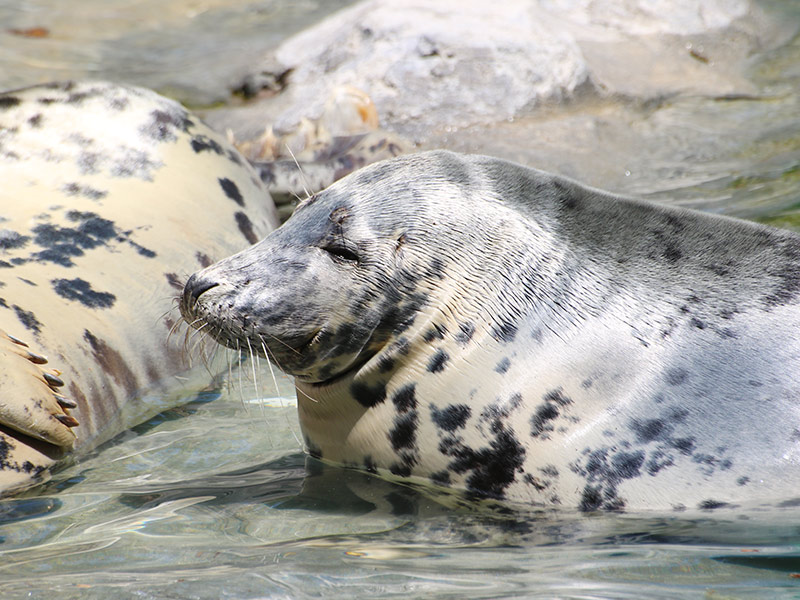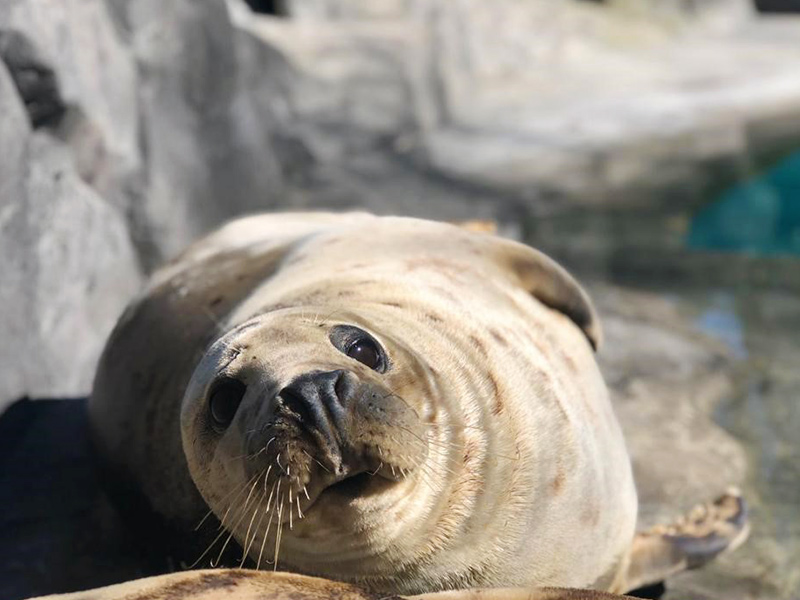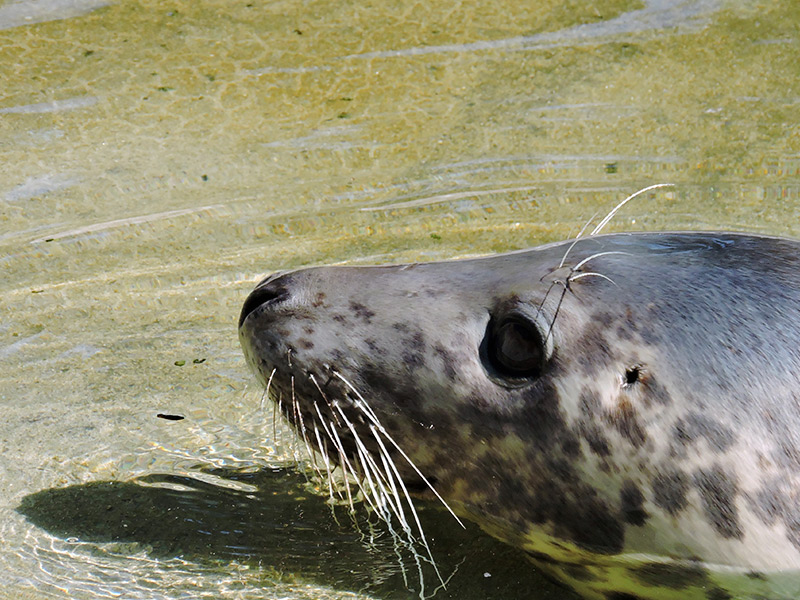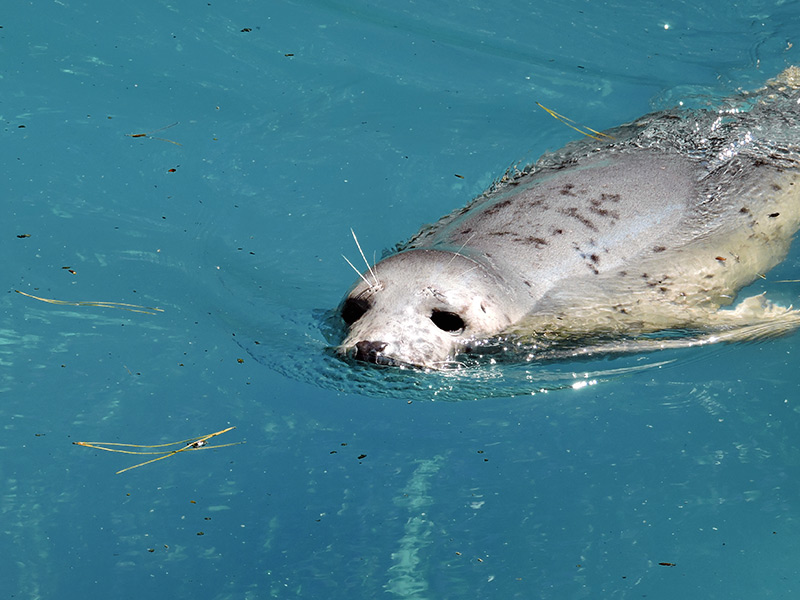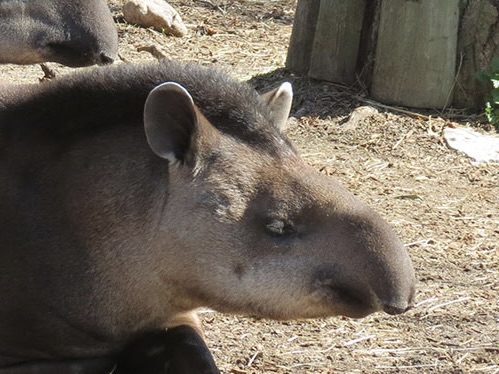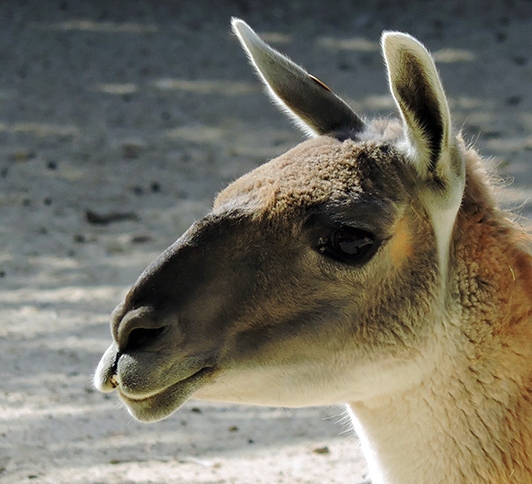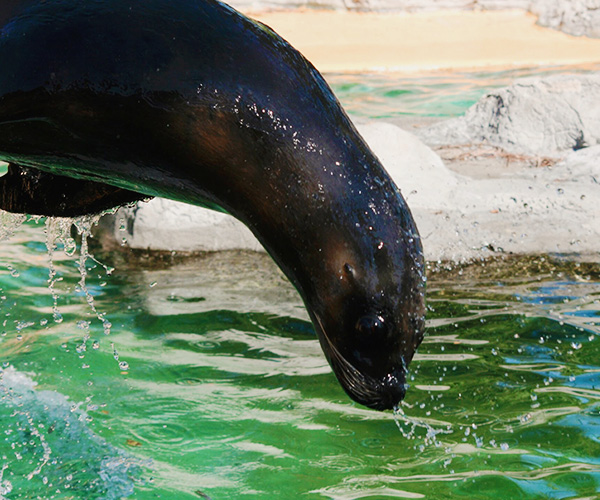The smooth, elongated body of the Grey seal is adapted to swimming and lacks external ears although they can hear through two small holes located on both sides of the head, unlike the sea lion.nbsp; Among the characteristics of the gray seal are its limbs, which have evolved into flippers. Its front flippers serve as a rudder while the rear flippers propel them (in the water), while sea lions propel themselves with the front flippers. Gray seals move more clumsily on land, although some can crawl at high speed, unlike sea lions, which move on all fours, since the femur-hip connection is different. Males, with darker hair, are much larger than females.
They have nails on both hind and forelimbs, unlike sea lions which only have nails on the hind limbs.
They are mainly found throughout the North Atlantic and inhabit islands and rocky coasts, caves, sandy beaches and pack ice.
Gray seals are solitary animals that only gather during the breeding season, when they mate and have their young. In September, the arrival of fertile females to the breeding areas begins, days before the arrival of the males. After the lactation period is over, the female gray seal becomes fertile again; mating take place in early November, but implantation of the blastocysts in the uterus does not occur until February. This helps the female to have time to recover from the energy expenditure involved in gestation and lactation. During the two periods of their life cycle that they spend on land (moulting and mating), they fast absolutely.
Their feeding habits are piscivorous, they are great divers and eat a great variety of fish.
